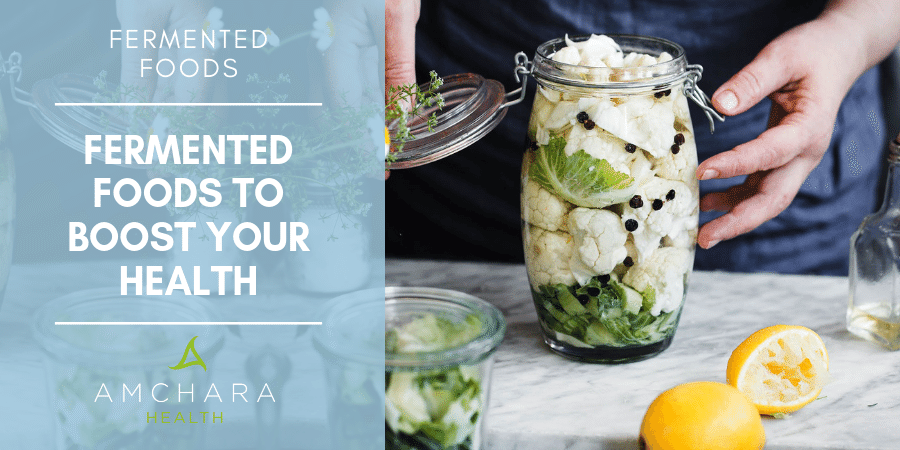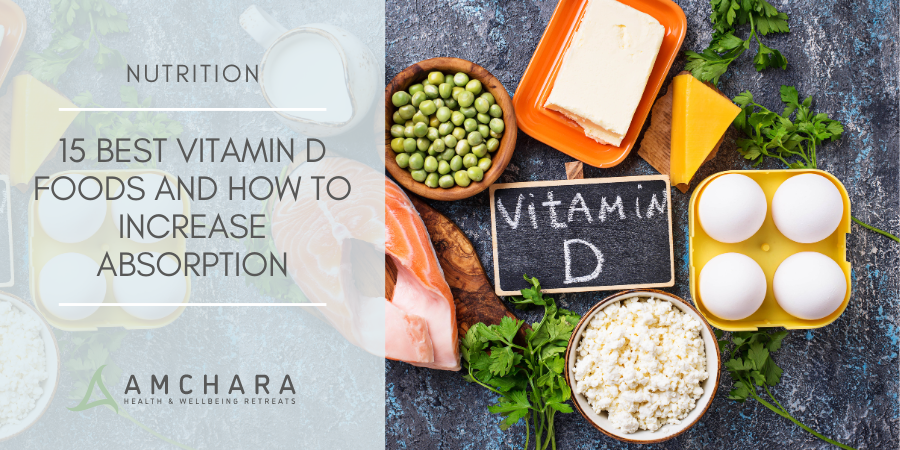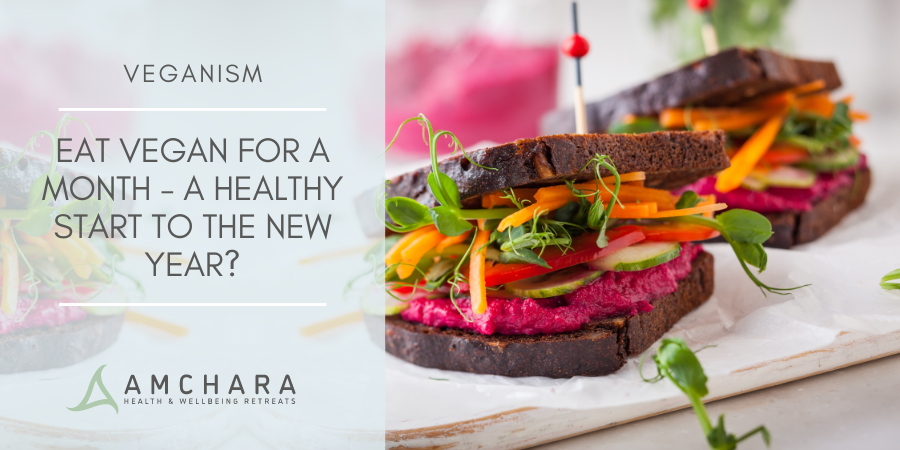Topics Covered in this article:
Fermented foods are not only delicious, they are a valuable part of a healthy diet.
In this article we’ll look at our ten top fermented foods and their health benefits plus give you some ideas on how to include them in your diet regularly.
Health Benefits of Fermented Foods
Fermented foods have been eaten for hundreds of years.
They arose because before food preservation methods were commonplace; traditional cultures needed to develop methods to preserve food during lean periods.
Fermentation is a process by which the sugars naturally present in food are broken down by bacteria and yeasts.
Not only does this change the characteristics of the starting food, but it creates an acid environment which means the food keeps for longer.
Fermented foods contain bacteria which can benefit your digestive system, because they produce lactic acid.
This helps your own beneficial bacteria living in the gut to flourish as it provides the kind of environment they prefer.
During the fermentation process, the starting medium is altered by enzymes.
In one review, fermented foods were noted to benefit the health of the intestinal wall, reducing the likelihood of increased intestinal permeability as well as having positive effects on the immune system (1).
Recent research has discovered we possess receptors for a specific type of acid produced by the lactic acid bacteria (LAB) commonly found in fermented foods (2).
Stimulating these receptors sends signals to the immune system, but it’s not currently clear exactly what effects this may have.
Interestingly however, we differ from most animals in that we possess an additional receptor.
It’s thought this may have developed as part of our evolution, enabling us to eat foods which are starting to decay.
Amchara’s Top 10 Fermented Foods
-
#1 Kombucha
Kombucha is a slightly fizzy fermented drink derived from green tea.
It’s been around for more than 2000 years, first being consumed in China in 220 BC.
In ancient China, it was called the ‘Immortal Health Elixir’.
The drink later became popular in Russia where it was known as tea kvass.
The starting point for kombucha is sweetened green tea which is fermented for at least a week with a culture of various bacteria and yeast strains.
The culture is called a SCOBY (symbiotic culture of bacteria and yeasts) and can be used over and over again.
During the fermentation process acetic acid is produced giving kombucha a distinctive sour taste. It’s often flavoured with added spices or fruits.
Kombucha delivers health benefits not only from the green tea starting medium, but also due to the probiotic bacteria it contains.
It’s also rich in antioxidants known as polyphenols.
The longer the fermentation time, the more antioxidants it contains (3).
In addition, kombucha contains beta-glucans (which play a role in our immune response), vitamin C and trace amounts of the B vitamins B1, B6 and B12.
Since kombucha is made from green tea, it naturally contains caffeine, although it’s thought the caffeine content decreases during the fermentation process.
Trace levels of alcohol are also naturally produced during fermentation.
Avoid kombucha with added sugar, and choose one which has not been pasteurised to retain the beneficial bacteria.
-
#2 Sauerkraut
Often connected with Germany, Sauerkraut is shredded cabbage which has been fermented by lactic acid bacteria.
It contains a diverse range of gut-friendly lactobacillus and other beneficial bacteria (4).
Increased diversity of our gut bacteria is connected with improved health throughout the body.
Sauerkraut contains plenty of fibre, along with vitamins K and C. It also contains lutein and zeaxanthin, two antioxidants which play a role in supporting eye health.
Because lactic acid is produced during the fermentation process, eating fermented foods such as sauerkraut can help to keep pathogenic bacteria such as E. coli at bay.
Sauerkraut is versatile, as it can be added to soups or casseroles, in sandwiches or salads or even added to smoothies.
If you are buying sauerkraut, choose an unpasteurised variety.
Sauerkraut is available made from both red and green cabbage.
If cabbage is not your thing, it can be made from beetroot, carrot or fennel and all sorts of flavours can be added such as ginger, caraway or garlic.
-
#3 Kimchi
Kimchi is the Korean equivalent of Sauerkraut, but it’s made from a different type of cabbage, with added spices such as ginger, red pepper and garlic. Kimchi has a very distinctive taste.
It’s commonly served as a side dish throughout South East Asia.
The origins of kimchi go back to the ninth century when the Koreans needed to preserve food to see them through the harsh winters.
It was originally made from fermented radishes.
Kimchi contains vitamins B1, B2, vitamin C and vitamin A.
Kimchi has been the subject of some studies regarding its effect on blood sugar control and cholesterol levels.
In one study, eating kimchi which had been fermented for ten days resulted in decreased insulin resistance and blood pressure after eight weeks. The participants of the study also lost weight and their waist circumference reduced (5).
Another study found undesirable LDL cholesterol decreased after just seven days of eating kimchi (6).
-
#4 Kefir
Kefir is similar to a thin yoghurt. It originates from East Europe and Asia and has also been studied for its health benefits.
It contains a good range of probiotic bacteria, and has been found to reduce inflammation and allergies, manage cholesterol levels and even improve bone health.
Some people are unable to digest the lactose in milk because they don’t produce the appropriate enzyme – it appears kefir may be able to help such people digest lactose.
Researchers found drinking kefir along with lactose-containing milk reduced the symptoms of gas, bloating and abdominal pain which participants usually experienced when consuming lactose (7).
Kefir is made by adding a starter culture of yeast and lactic bacteria called kefir grains to cow’s or goat’s milk.
The starter ferments the lactose, turning it into lactic acid which gives kefir a sour taste.
Kefir can also be made with sweetened water, coconut water or coconut milk, and can be flavoured with lemon, ginger, fruit, cacao or spices.
Enjoy kefir as a refreshing drink, in smoothies or even made into ice-cream.
-
#5 Tempeh
Tempeh is made from fermented soya beans and originates from Indonesia.
It has a distinctive nutty taste, and it’s generally sold in a compact block with a firm, chewy texture.
Tempeh is fermented using a fungus so, rather than containing beneficial bacteria, it contains a type of fibre called a prebiotic – food for our digestive bacteria.
Many legumes and beans, including soya beans, are high in phytic acid which can prevent the body absorbing minerals such as calcium, but fermentation reduces the phytate levels.
Tempeh has been found in studies to contain beneficial antioxidants known as isoflavones, namely daidzein and genistein (8).
Soy isoflavones have been studied in relation to their ability to reduce cholesterol levels.
Because they can act as weak oestrogens in the body, isoflavones can balance female hormones when eaten in moderation.
You may also find tempeh made from fermented chickpeas or black beans.
Tempeh is high in protein and can be used as a meat substitute, usually fried, baked or steamed.
It contains important minerals such as manganese, iron, magnesium and calcium.
-
#6 Miso
Miso is a thick paste made from soya beans that have been fermented with a type of fungus called koji.
Originating from Japan, it tastes salty and often used as a flavouring or on its own to make soup.
Miso is fermented for anywhere between a few weeks to three years – the longer the fermentation, the richer the taste.
Miso exists in several varieties, ranging in colour from white or yellow to red or brown. It can also be made with other types of beans.
Miso contains antioxidants along with zinc, vitamin K, manganese and protein.
Research in animals suggests it may aid in maintaining healthy blood pressure and cholesterol levels, and one study in over 40,000 women aged between 40 and 59 years showed consumption of miso was associated with reduced risk of heart disease (9).
Miso can also be used in sauces, spreads, dips or marinades, or in salad dressings.
As miso is salty, it is best consumed in moderation.
-
#7 Tamari
A liquid condiment similar to soy sauce, tamari is richer and, unlike regular soy sauce, no wheat is added during its manufacture, so it’s gluten free. It’s also higher in protein than soy sauce as it contains a higher proportion of soya beans.
Tamari originates from Japan and was first used over 2,000 years ago.
Technically, tamari is the liquid which is formed as a by-product of making miso.
It naturally contains manganese, magnesium and some B vitamins.
Use it as you would soy sauce, in dressings, dips, stir-fries or marinades.
A dash of tamari can be used to add flavour to roasted vegetables or salads.
It should be noted tamari is high in salt.
-
#8 Natto
Natto is a staple food in Japanese kitchens and is again made from fermented soya beans.
Traditionally it’s served with rice and pickled vegetables at breakfast.
Natto is an acquired taste because of its strong bitter flavour and ammonia smell – it also has a gooey, slimy texture.
Natto contains fibre as well as vitamin K. In fact it’s one of the few plant-based sources of vitamin K2, which is believed to be better absorbed by the body. In one study over three years, eating natto was connected with improved bone mass in postmenopausal women (10).
Apart from containing a good range of probiotic bacteria, an enzyme called nattokinase is produced during the fermentation process.
This enzyme has been linked in studies with reduced blood clotting and lower blood pressure.
Occasionally you may find natto made from sunflower seeds or beans such as black beans and kidney beans.
Natto can also be served with vegetables, fish or miso soup, so why not give this intriguing fermented food a try?
-
#9 Apple Cider Vinegar
Apple cider vinegar has been used as a folk remedy since the 1700s.
It’s produced by fermenting apple juice with yeast and bacteria in a two-stage process.
Raw apple cider vinegar contains cloudy particles known as ‘the mother’ – made up of proteins, enzymes and probiotic bacteria.
Apple cider vinegar also contains antioxidants, as well as certain acids such as acetic acid, which helps support the health of the beneficial bacteria in the gut.
Many health claims are made for apple cider vinegar, although few of these have been scientifically studied.
However, research has found apple cider vinegar taken in the evening successfully lowered waking blood glucose levels in people with Type 2 diabetes. It’s thought the acetic acid in apple cider vinegar has a beneficial effect on glucose metabolism (11).
Use apple cider vinegar in dressings, sauces and marinades, or simply drink two teaspoons in a cup of warm water before meals.
It’s important to buy organic apple cider vinegar which hasn’t been pasteurised and which contains ‘the mother’.
-
#10 Sourdough Bread
Although it has only recently gained popularity in the UK, sourdough is a traditional form of bread making and is believed to have originated in Egypt around 1500BC.
The dough is fermented resulting in it rising without the use of added yeast.
The raising process takes far longer than modern bread making methods and relies on bubbles of gas being produced as the grain ferments.
When made in the traditional manner, sourdough has no baker’s yeast added to the dough; instead fermentation proceeds as a result of the yeasts and bacteria naturally present in the grains.
This significantly changes the nutritional content of the resulting bread.
The fermentation process also results in the gluten being altered so while wheat-based sourdough bread does contain some gluten, it may be easier to digest than regular bread.
The fermentation process used in sourdough breaks down more of the phytic acid in the grains than yeast-based bread making, so the minerals it contains can be better absorbed.
The lactic acid bacteria also appear to produce antioxidants during fermentation, so sourdough is higher in antioxidants than regular bread (12).
Unlike the other fermented foods in this list, sourdough bread doesn’t contain any active bacteria because it is baked and so they’re killed by the heat.
Takeaway
Fermented foods can play a useful part in healthy food choices by providing valuable nutrients and supporting digestion through contributing beneficial bacteria to balance your microbiome.
If you would like to further explore the relationship between nutrition and health, why not have a consultation with an Amchara Health Practitioner specialising in personalised health.
Did you find this article useful?
Do you have any favourite fermented foods?
We’d love to hear from you, lease share your thoughts in the comments.
READ THIS NEXT:





